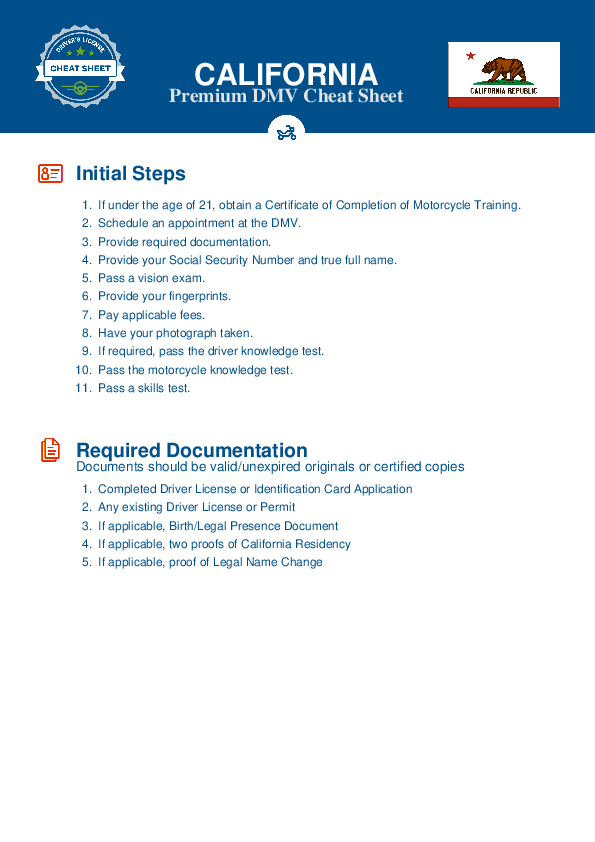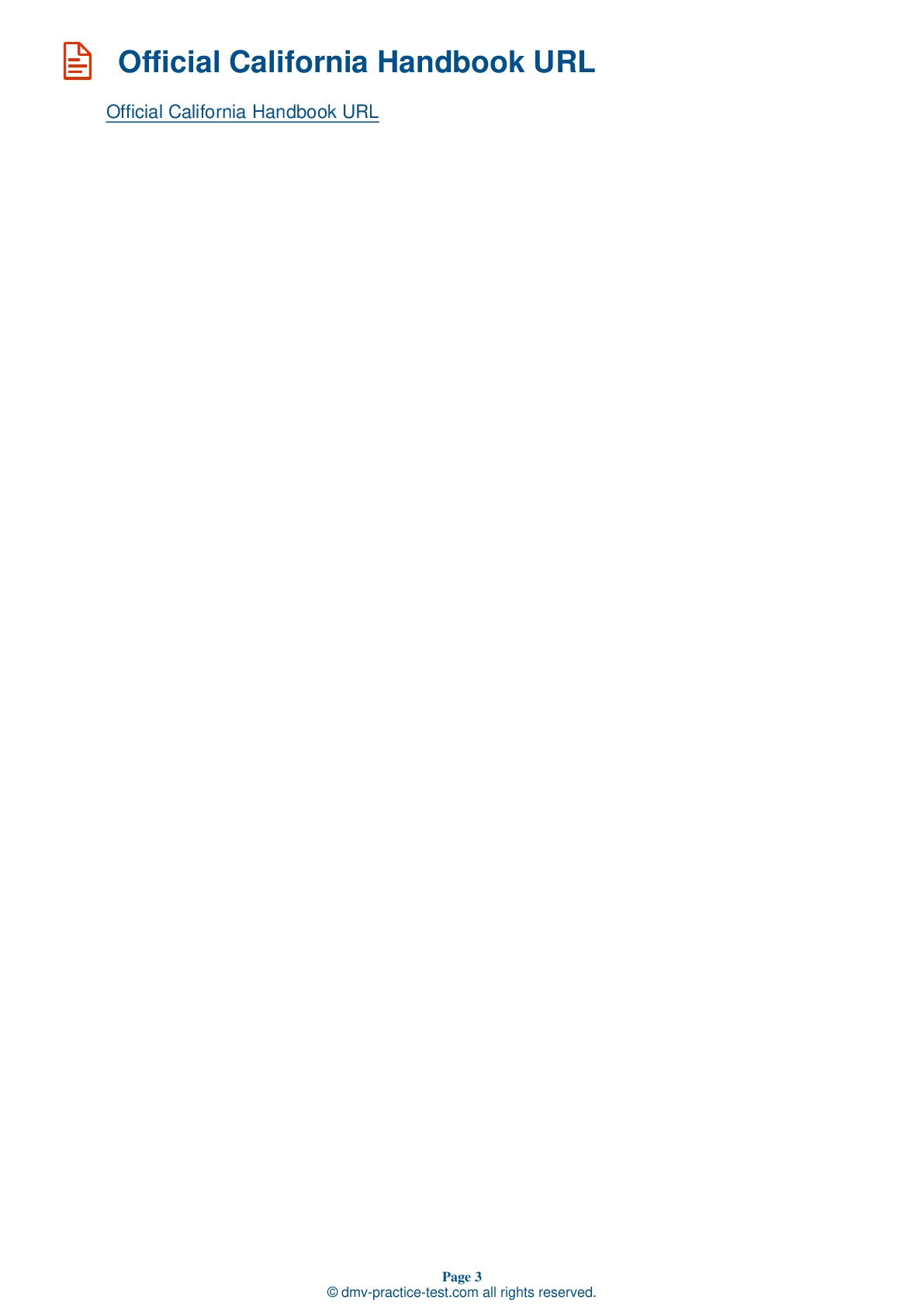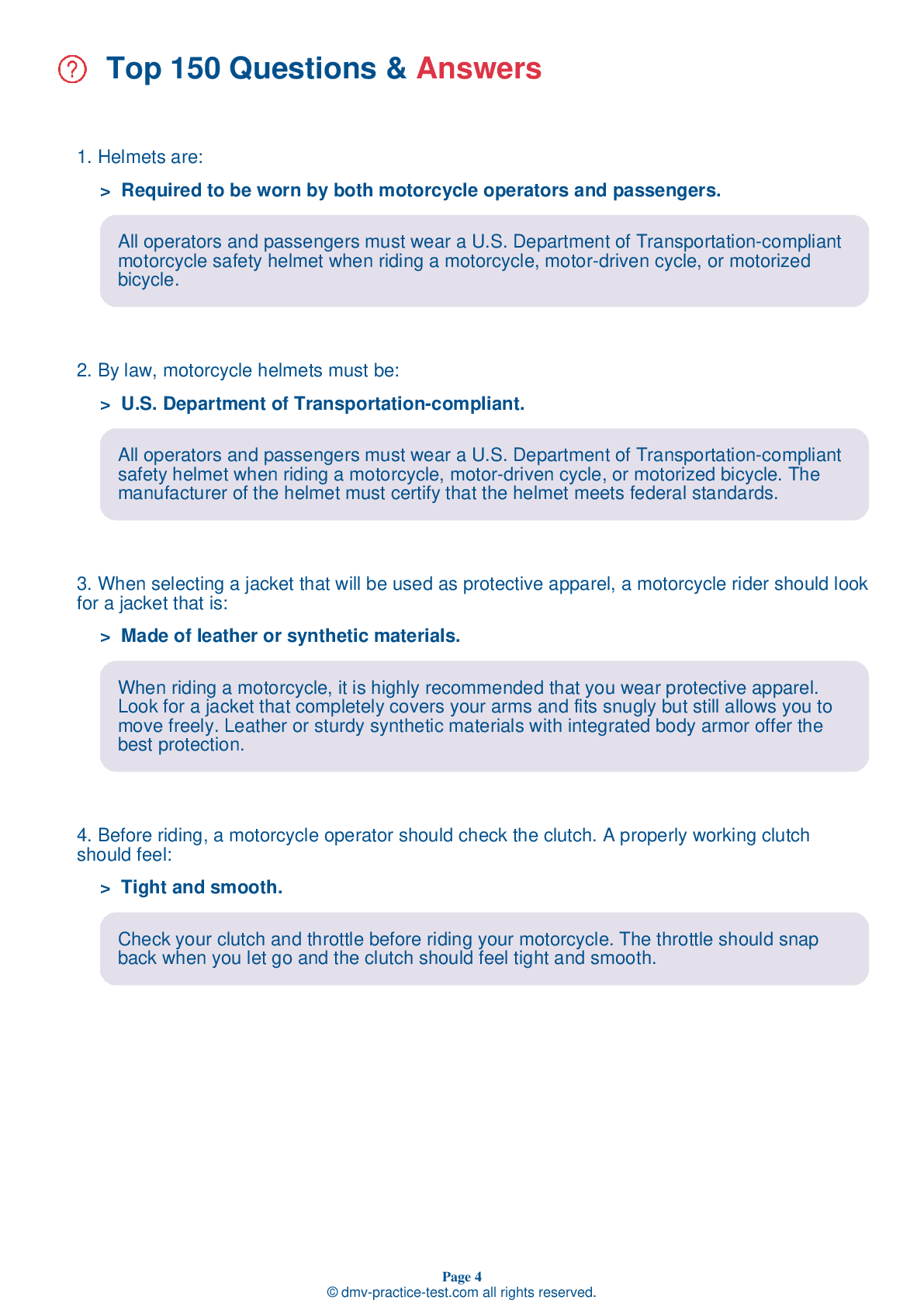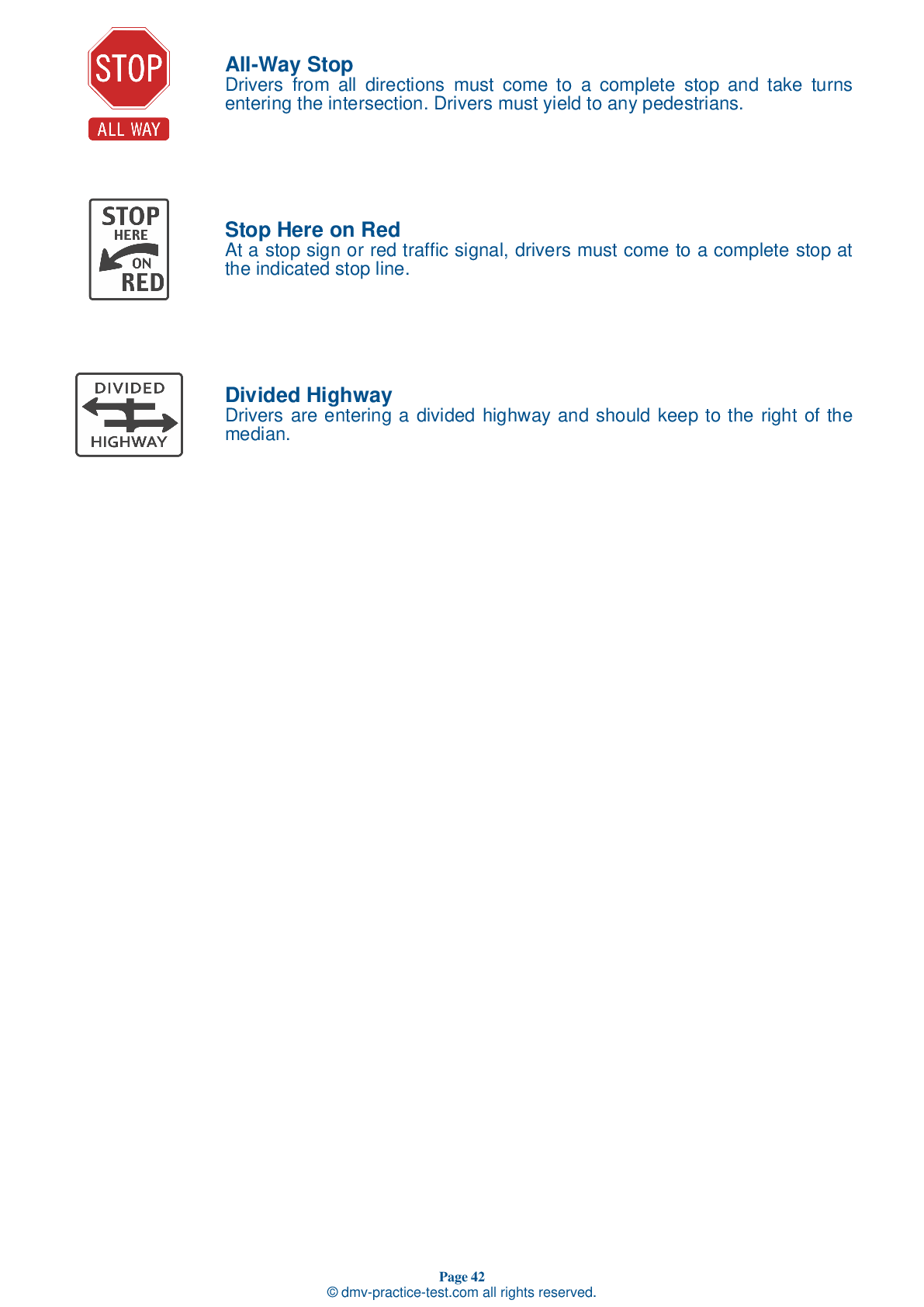Motorcycle Test | License CA 2025 | FREE Online Practice! #2 Page 2 of 4
Take this FREE motorcycle test (license in CA 2025) to check your knowledge of the road rules. To improve your results, download a motorcycle handbook online, study theory, and practice for free on our website. Still worried about how to get a motorcycle license in California in 2025? Check our website for more sample tests, train as much as possible, and boost your grades!
9 . When being followed by a tailgater, you should:
If you are being followed by a tailgater, you should ride in a way that encourages them to pass you. Riding at a higher speed may only result in them tailgating you at a higher speed, increasing the danger.
10 . Under normal riding conditions, one of the best ways to help others see your motorcycle is:
The best way to help others see your motorcycle is to have your headlight turned on (as well as your running lights, if applicable). Use your high beam headlight both day and night, whenever it is legal and safe to do so.
11 . If your rear wheel locks up while you are stopping on a straightaway:
If you accidentally lock your rear wheel while stopping on a straightaway, you can keep it locked until you have completely stopped. Even with a locked rear wheel, you can usually control your motorcycle if it is upright and traveling in a straight line.
12 . When sitting on a motorcycle, your arms should:
Your arms should be slightly bent when you are holding the handle grips of a motorcycle. Bending your arms reduces arm fatigue and permits you to press on the handlebars without having to stretch.
13 . The oily strip down the center of a lane:
While the center strip of the road can be oily, it usually provides enough traction for safe riding, unless it is raining. The oily strip is usually no more than two feet wide, so motorcyclists can generally ride on either side of the strip and still be in the center portion of the lane.
14 . This sign means:
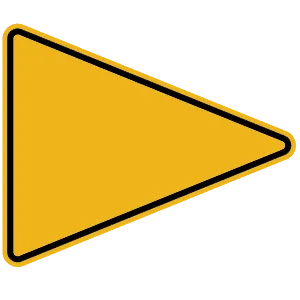
A triangular yellow sign with black lettering indicates a no passing zone. It will appear on the left side of a two-way, two-lane roadway at the beginning of an area where prohibitive pavement markings are also used.
15 . The best way to avoid fatigue when riding your motorcycle on a long trip is to:
To avoid becoming fatigued when riding your motorcycle on a long trip, limit how much time is spent riding each day and take frequent rest breaks. Avoid the use of artificial stimulants because you may experience extreme fatigue when they start to wear off.
16 . In general, when riding at night, your headlight should:
Using your high beam headlight will help you see and will help other drivers see you. Use your high beam headlight any time you are not riding behind or approaching other vehicles.
See the exact questions that will be on the 2025 California DMV exam.
99.2% of people who use the cheat sheet pass the FIRST TIME
Jeneen was tired of paying $5/gallon. She got herself a scooter that required the motorcycle license. She studyed the motorcycle test cheat sheet and passed her test the next day!
Christopher tells us how he knew nothing prior to obtaining the motorcycle study guide, and he only got one question wrong because he clicked on the wrong answer by mistake.
